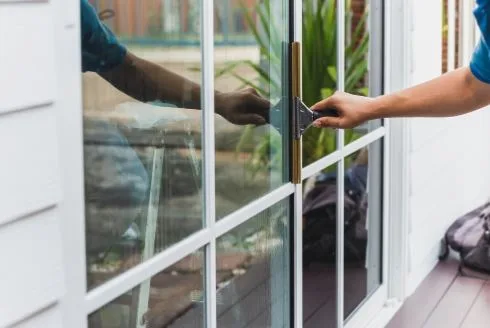How Window Tint Protects Your Furniture and Floors
Most homeowners notice that furniture and floors near windows start to change with time. Colors fade. Surfaces dry. Wood shifts. These changes do not happen because of age alone. Sunlight plays a major role. Window tint helps control these problems by reducing the parts of sunlight that cause wear inside your home. Many people start with simple residential window tinting because it protects their home without changing how they use the room or adding any daily steps.
How Sunlight Affects Indoor Materials
Sunlight carries three types of energy. Each type affects materials in a different way. When you understand what causes the damage, it becomes easier to see how window tint helps.
Ultraviolet Light and Color Loss
Ultraviolet light has a major effect on color. It breaks down the dyes used in fabrics, rugs, wood stains, and prints. When dyes weaken, the surface starts to lighten. The change starts slowly, but it builds over the years. A cushion left near a sunny window often shows a clear color difference compared to one kept in the shade. Lab tests on fabrics show that UV exposure is one of the strongest causes of fading in home interiors.
Heat Inside Your Home
Furniture and floors are no exception to heat. If a room is heated by the sun’s rays, things that are made of wood or other materials will react to the heat. Wood grows. When the room is at a lower temperature, the wood shrinks. This repeated process causes the wood fibers to get very tight. Such tension can be enough to cause small gaps or slight changes in the shape of the wood after a long period of time. The effect of heat is not just on the wood, but also on the glue that is used under the floor. Warm temperatures can cause the glue to be less strong. You may see it happening very quickly in rooms that are exposed to the sun during the whole afternoon.
Visible Light and Gradual Wear
Visible light adds to fading. It does not cause as much damage as UV, but it still affects dyes and surfaces when the exposure continues each day. A rug or sofa that sits in a bright area for several hours each day often shows a gradual change in tone. These changes are easy to see when you move the furniture after a few years.
How Window Tint Reduces UV Damage
Window tint works as a barrier that blocks most of the UV that enters through clear glass. Many films block up to ninety-nine percent of UV. This reduction protects materials inside your home from the constant breakdown caused by UV.
Protection for Fabrics
Fabrics lose strength and color when exposed to UV. This includes cotton, linen, polyester, and blends used in upholstered furniture. Tint blocks the light that affects the fibers. The fabric keeps its original tone longer. This slows the need to replace or reupholster items near bright windows.
Protection for Leather
Leather dries faster when exposed to UV and heat. The surface becomes stiff. Cracks form with time. Tint helps lower the amount of direct UV and also lowers temperature increases. This keeps leather more stable. You spend less time conditioning the surface, and the furniture stays in better shape for more years.
Protection for Wood Furniture
Wood is very sensitive to sunlight when it comes to finishing. A piece of furniture that has been near a window with bright light can show a different color of the wood after a few years. The finish is guarded by the tint by cutting UV exposure. This reduction in breakdown thus allows the wood to look more even for a longer time.
How Window Tint Controls Heat
The rooms become hot very quickly when the sun rays are directly hitting the floors and furniture. By cutting down the amount of infrared energy that goes through the glass, tinted windows lower this impact. As a result, it stabilizes the temperature inside the house.
Better Conditions for Wood Floors
Wood floors react to daily temperature swings. When the floor heats up, it expands. When the floor cools down, it contracts. Over the years, these cycles create small gaps or minor warping. Tint limits this movement by reducing heat buildup. This keeps the floor more stable across seasons.
Less Heat Stress on Upholstery
High heat affects fabric fibers and padding inside sofas and chairs. Window tint reduces the heat load on these items. They stay firm and hold their shape longer.
How Window Tint Protects Different Flooring Types
Floors are often the first part of your home to show sunlight damage. They receive direct exposure for several hours a day. Tint gives steady protection and slows long-term wear.
Hardwood Floors
Hardwood shows clear signs of sunlight exposure. Some woods lighten. Others darken. The change depends on the type of wood and stain used. Many homeowners spot the outline of rugs or furniture after a few years. Tint reduces these changes by limiting UV and heat levels. Your floor keeps a more even tone across the room.
Vinyl Floors
Vinyl reacts to heat and UV in a different way. Some types fade or discolor. Others may warp. Tint lowers the intensity of the sunlight. This keeps vinyl flooring more stable and lowers the chance of surface damage.
Carpets and Rugs
Carpets fade when exposed to daily sunlight. A rug near a window may show a clear border where the light reaches more often. Tint reduces this fading and helps keep colors consistent across the entire surface.
How Window Tint Protects Furniture
Furniture near windows faces daily exposure. The effect builds over many years. Tint provides a direct way to limit this exposure without removing natural light.
Upholstered Furniture
Typically, pieces that are upholstered tend to discolor quickly than other types of materials. A tint works by restricting the amount of solar rays that come in contact with the fabric. By doing this, it slows down the process of fading and thus, the furniture stays looking like new for longer.
Leather Furniture
Leather furniture receives two benefits from tint. UV protection slows drying and cracking. Lower heat reduces surface stress. This combination helps your leather pieces stay flexible and last longer.
Wood Furniture
Wood surfaces near windows often need more refinishing because sunlight affects the finish. Tint lowers the amount of light and heat reaching these surfaces. Your tables and shelves maintain their tone and shine for many years.
Other Benefits That Support Interior Protection
Window tint helps your furniture and floors in direct ways, but it also brings side benefits that support the overall condition of your home.
Lower Indoor Temperatures
Lower temperatures inside your home reduce stress on materials. The more stable the room stays, the slower the wear on wood, fabric, and leather. You also save on cooling costs since your air conditioner does not work as hard.
Less Glare
Glare may cause you to change the layout of the rooms in order to get rid of the bright spots. With tint, you can reduce the glare, and thus, you have the liberty to put the furniture wherever it suits your layout. There is no need for thick curtains to stop the sun.
Improved Privacy
There are certain window tints that offer privacy during the day. So, the inside of your house can be kept safe without shutting the blinds or curtains. This allows natural light to come into the room and at the same time, your things are safe.
How Long Does Window Tint Last
Nearly all contemporary window films have a lifespan of ten to twenty years which is mostly influenced by the amount of sunlight they are exposed to and the way they are cleaned. In this period of time, the ability of the film to block UV rays remains intact. The film is not a big chore. Just a little cleaning with a mild soap and water will be enough to keep it nice and clean. There is no need for special products.
Cost Comparison With Interior Damage
Window tint is often far less costly than repairing the damage caused by sunlight.
Examples
- Tint installation for a room can cost two hundred to four hundred dollars.
- Refinishing hardwood floors can cost three to eight dollars per square foot.
- Replacing a faded rug can cost two hundred dollars or more.
- Repairing cracked leather can cost a high amount, depending on the size and depth of the cracks.
Tint reduces how often these repairs or replacements are needed.
Choosing the Right Tint for Your Home
Different tint films have different performance levels. It is important to choose the one that fits the needs of your home.
UV Blocking Level
Look for a film that blocks at least ninety-nine percent of UV. This gives strong protection for furniture and floors.
Heat Reduction Level
Choose a film with a high infrared rejection rating. This helps lower indoor heat and protects materials from temperature swings.
Visible Light Preference
Some homeowners prefer a clear film that does not change the look of the windows. These films still offer strong UV protection. Others choose slightly tinted films for added comfort. Select one that matches your lighting preference.
Professional Installation
Proper installation helps the film perform consistently. A trained installer fits the film without bubbles or gaps. This creates an even layer across the window.
Best Areas to Install Window Tint
You do not need to tint every window. Targeting the right areas gives good results.
South-Facing Windows
These windows receive direct sun during the middle of the day. Tinting them protects floors and furniture from heavy exposure.
West-Facing Windows
The afternoon sun creates strong heat. Tint helps reduce this temperature rise.
Large Windows and Glass Doors
Large glass areas allow more UV and heat into your home. Tint protects wider floor areas and bigger sections of your furniture.
Rooms Used Most Often
Living rooms, dining rooms, and bedrooms with long sunlight exposure benefit from tint because you use these spaces daily.
Simple Maintenance Tips
Tint is almost a maintenance-free product.
- Cleaning a window should be done by using mild soap and water.
- Use soft clothes.
- Avoid cleaners that contain ammonia.
- Be vigilant for little areas that are lifting after a long time and get them fixed early.
- Do not put furniture directly against windows.
Key Points for Homeowners
By cutting off UV as well as heat and limiting the visible light to the area, window tinting is one of the most powerful ways to save your furniture and floors. So, the fading is stopped, the surface is smoother, and the life of the materials is extended.
Moreover, the interior becomes cooler because the glare is reduced and the temperature inside is more uniform. For many homeowners, installing tint is a simple improvement that brings a strong return on investment and makes expensive repairs less frequent. Working with a local expert like Beat the Heat Window Tinting gives you even better long-term protection and peace of mind.






